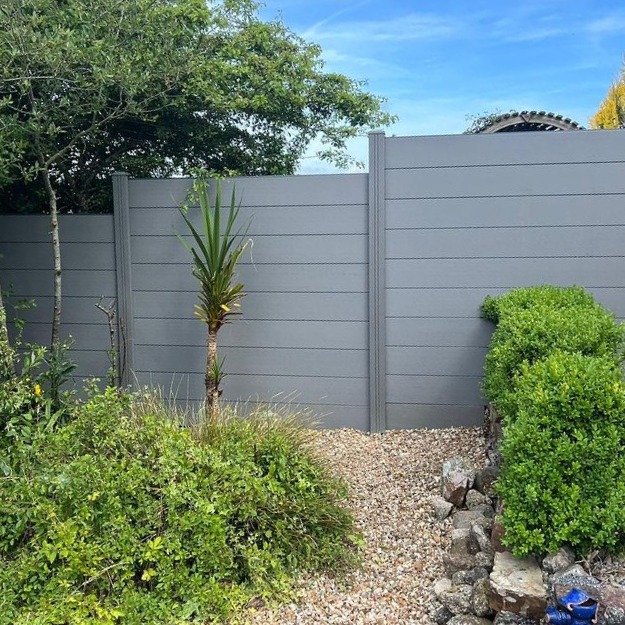All Categories
Featured

Simply like any kind of outside framework, plastic fencings still need regular cleansing to maintain them looking excellent and to extend their life expectancy. Below are some of the best methods for cleansing your vinyl fencing.
- Regular Dusting and Sweeping. Routine treatment is crucial to stop particles from constructing up on your vinyl fence. The most convenient way to preserve your fencing is by consistently sweeping or cleaning off any kind of dust, leaves, or various other debris that collect.
- Light Soap and Water for Routine Cleaning. For regular maintenance, a straightforward soap and water solution works marvels. It's a simple, reliable means to cleanse your vinyl fencing without creating damages. Right here's just how to cleanse your plastic fencing with soap and water:
Action 1: Mix a mild cleaning agent, such as recipe soap, with warm water in a pail. Aim for around 1/4 cup of soap for each gallon of water. Action 2: Dip a soft cloth, sponge, or non-abrasive brush right into the option and gently scrub the surface of the fence. Take note of dust accumulation on edges, edges, and low-lying locations where gunk might gather. Step 3: After cleansing the surface, wash it extensively with a garden tube to eliminate all soap deposit. This approach is excellent for light dirt and gunk and can be done every few months to keep the appearance of your fencing.
- Make Use Of a Power Washing Machine for Stubborn Discolorations. If you have actually overlooked your plastic fencing for a while, or if it has built-up gunk, mold, or mold, a power washer can be an efficient tool for deep cleaning. Nonetheless, you need to use the appropriate stress to avoid harming the plastic. Right here's just how to safely power wash your plastic fence:

Action 1: Set the power washing machine to a low-pressure setting, preferably around 1,500-2,000 psi. High stress can damage the plastic surface or cause it to crack. Action 2: Stand at the very least 2 feet away from the fence and start splashing from the top down. This helps protect against touches and ensures that dust is cleaned off successfully. Action 3: Move the power washer nozzle in a side-to-side sweeping motion, and make sure to keep the water stress constant. Tip 4: Rinse the entire fence extensively with water to get rid of dirt and detergent deposit. Power cleaning is an excellent choice for large fencings or for those with persistent dust and spots that soap and water can not get rid of.
- Removing Mold And Mildew and Mildew. In shaded or moist locations, mold and mold are common issues for plastic fences. To fight this, you can make use of a solution of vinegar or bleach to decontaminate and eliminate the growth. Here's exactly how to deal with mold and mildew and mold on your fencing:

Action 1: Mix one cup of white vinegar with a gallon of warm water. Mix 1/4 cup of bleach with a gallon of water. Step 2: Use the remedy to the impacted locations utilizing a soft fabric or sponge. Allow it rest for regarding 10-15 minutes. Action 3: Rub the areas with a non-abrasive brush to lift the mold or mold off the surface. Step 4: Wash completely to eliminate any kind of cleansing solution and particles. If you choose to use bleach, be careful not to splash it on close-by plants or materials, as it might trigger damages or staining.
- Plastic Fence Cleaners for Tough Discolorations. For challenging, stubborn spots like oil, tar, or pen residue, you can use a specialized vinyl fencing cleaner. These items are created to safely clean vinyl without creating damage. Be sure to comply with the product's directions for best outcomes, and test it on a small, low-profile area of the fence first.
- Protecting Against Future Dirt and Stains. While cleaning is very important, preventing future spots and accumulation can make your upkeep regular a lot easier. Consider these pointers for long-lasting maintenance:
Trim plants: Thick plants, vines, or hedges can trap wetness versus your vinyl fencing, bring about mold development. Cut nearby plants to ensure the fencing continues to be tidy and dry. Seal splits and gaps: Inspect your fencing on a regular basis for splits or spaces, and seal any that you find to maintain dust and water from going into the fence framework. Mount a safety coating: Some property owners apply vinyl-safe protective finishings to their fencings. These layers can act as a barrier versus dirt, UV rays, and water, lowering the frequency of deep cleaning required. 7. Expert Cleansing. If you're uncertain regarding cleaning your fence on your own, or if it calls for a deep tidy, take into consideration employing a specialist. Several cleansing business use fence cleaning services and have the equipment and experience to tackle challenging discolorations without damaging your fencing. They can additionally take care of big or high fences that might be tough to clean up on your own.
Final thought. Plastic fencings are low-maintenance, but they still need normal like keep them looking their ideal. By using moderate soap and water for routine cleansing, utilizing a power washer for persistent dirt, and treating mold or mold quickly, you can guarantee your vinyl fencing stays pristine. Routine cleansing, in addition to safety nets, will extend the life of your fence and maintain it improving the charm and safety of your building for years to find.
Latest Posts
Why Pick Washington Fencing Specialized Products
Published May 08, 25
1 min read
Explore Countless Opportunities
Published May 07, 25
1 min read
Seeking a Service Center Close By? Choose Car-X St. Louis for Expert Care
Published May 07, 25
1 min read